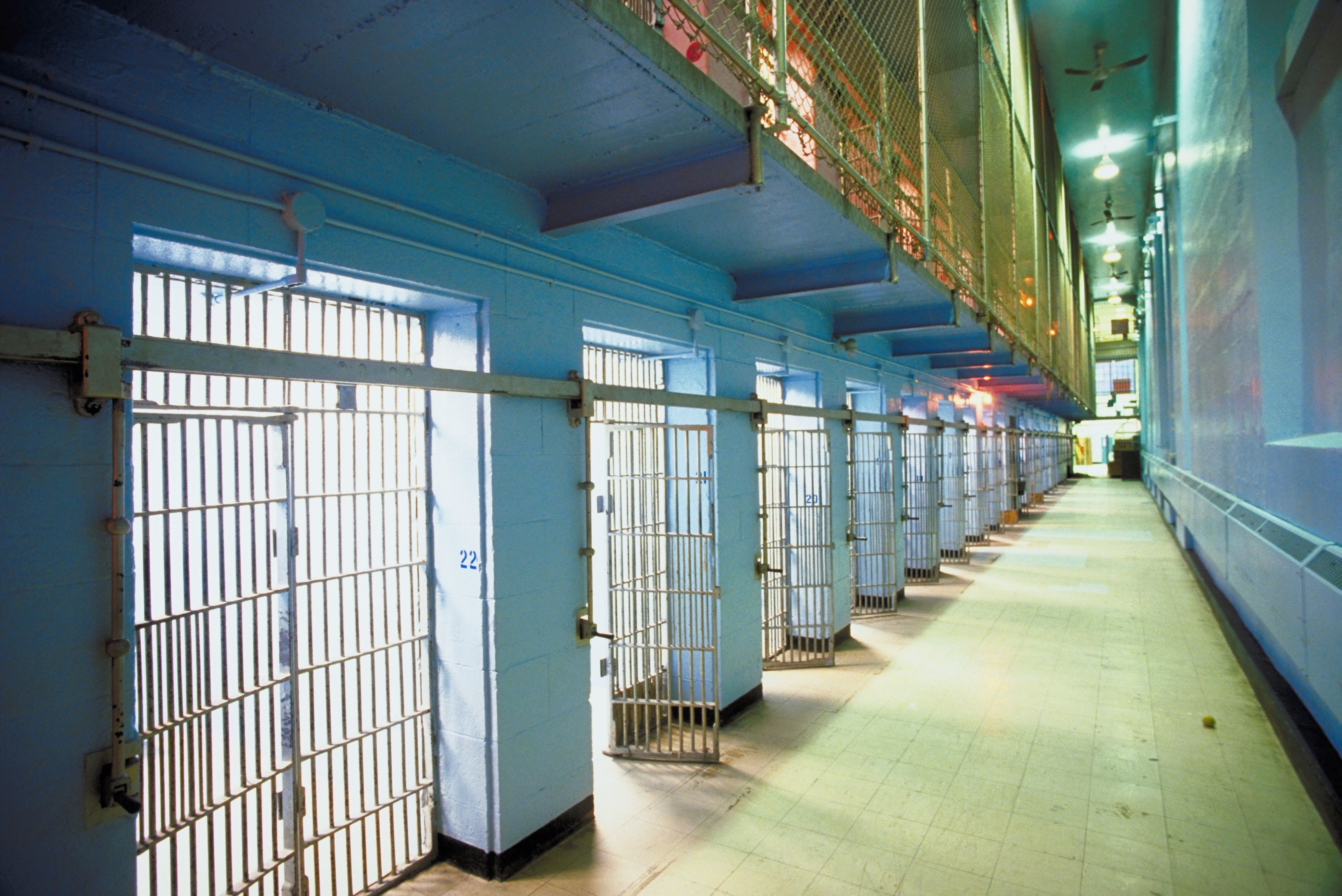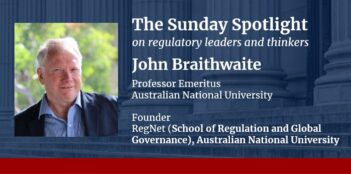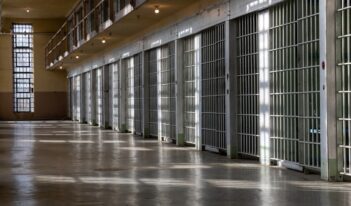
Creative policy changes could re-center our criminal justice system.
When Israel transferred responsibility for arrestees from its police force to its prison authority about a decade ago, a funny thing happened. Weekly arrests shot up and lasted longer. Most of the new arrests were for minor offenses, and new arrestees were 20 percent less likely to be charged with a crime, suggesting arrests based on weaker evidence.
Funny or not, the result was predictable to any economist. Israel’s reform had created a textbook case of negative externalities—meaning the responsible party did not bear the cost of its actions. In Israel, the policy shift stuck the prison authority with the bill for the police force’s activities. Similar negative externalities are a big issue for American criminal justice.
The externalities problem is acute in criminal justice for two reasons. First, we think of criminal justice as individual justice. Actors thus tend to view each case as an isolated transaction to the exclusion of broader, long-term, and aggregate effects. Second, criminal justice, especially American criminal justice, is fragmented vertically among governments, horizontally among agencies, and individually among self-interested actors. No one player has the responsibility, incentives, or information to take systemic harms into account. And given the politics of criminal justice, democratic processes do little to correct this dynamic.
Police and other law enforcement systematically overuse force in part because few mechanisms require them to consider the full social costs of doing so. The costs of arrests, for instance, are substantial: arrests are frightening and humiliating, use valuable resources, and burden arrestees with lost income, arrest records, and other harms. Yet few of these costs fall on the police. So, too, for other coercive measures. Prosecutors and judges do not shoulder the full costs of pretrial detention, such as overcrowded jails, difficulties in mounting a defense, and personal and family trauma. Similarly, states pay for prisons, but local prosecutors’ decisions fill them. That “correctional free lunch” gives prosecutors little incentive to use prison judiciously, which helps explain why some counties dramatically overconsume it.
Outside of criminal justice, policymakers use a wide range of regulatory tools and strategies to combat externalities. Some examples include taxes on cigarettes, cap-and-trade regimes for pollution, and cost-benefit analysis in regulation. How might criminal justice look if we brought such tools to bear on policing and punishment? Consider a few possibilities.
Cost-benefit analysis for sentencing and arrests. The U.S. Environmental Protection Agency, U.S. Securities and Exchange Commission, and other agencies have long had to defend their regulations in cost-justified terms. Why not hold sentencing and arrest guidelines to the same standard? The great virtue of cost-benefit analysis is that, if done rigorously, honestly, and transparently, it can surface and force consideration of all harms and gains—short- and long-term, concentrated and diffuse, and monetary and non-monetary (such as dignitary and distributive harms)—that a given policy option implicates. It is not hard to imagine how some draconian provisions of the federal sentencing guidelines or New York City’s stop-and-frisk policies might have come out differently, and wrought less social damage, if policymakers had subjected them to methodical cost-benefit testing that was open to robust public scrutiny and debate.
Such procedures help policymakers confront tough tradeoffs and encourage them to make more welfare enhancing decisions. As experience in states like Washington and Minnesota has shown, cost-benefit and other impact assessment procedures also provide politicians with a degree of political cover when making criminal justice policies. The broad consideration of costs also acts as a proxy for values and voices that get little traction in state legislative halls, helping to make criminal justice policies more representative of the entire population they serve.
Taxing searches. Going a step further, one might directly price coercive law enforcement interventions, such as searches. Brooklyn Law School Professor Miriam Baer suggests in a forthcoming article that police searches should be priced based upon criteria like search volume and intrusiveness—in essence, a tax that requires searchers to pay the costs they impose upon searchees. If an actual tax seems too unwieldy, notional accounts that allow police to conduct an average amount of searching per year but require them to justify overly aggressive search rates could accomplish something similar. Officials could juxtapose the amount “spent” on searches against convictions, which could be credited to those accounts in amounts that correspond to the severity of the crimes prevented.
Such notional “net benefit accounts”—a term coined by University of Chicago Law School Professor Eric Posner—are a relatively new idea. But their precursor, regulatory budgets, have been around since the 1970s, though rarely have they been discussed in the context of criminal justice. Net benefit accounts can serve an important auditing function by aggregating data about law enforcement activity—such as searches, sentencing, and parole—in digestible ways that encourage monitoring and oversight by others. They also encourage actors to take account of the full costs and benefits of their actions by rewarding them when they make socially valuable decisions. Think of a “parole budget” that rewarded parole boards for making good release decisions instead of, as we now do, only penalizing them for bad ones.
Capping (and trading?) prison beds. Related to pricing are caps, which can also bring incentives back in line. In a number of contexts, such as arrests, caps might not be appropriate. But in other contexts, like prison, they could make sense. Just as a capping scheme limits the amount of clean air a coal plant can use in generating profits, so too could it limit the number of prison beds that local prosecutors can use in generating personal, political, and social gains.
A trio of criminal justice professors, Cheryl Jonson, John Eck, and Francis Cullen, have proposed how it might work. States could set a cap on the number of people who could be sentenced to prison each year. They could then allocate prison beds to each county or locality based on some metric—population size, violent crime rates, or something else. Localities could use those beds however they pleased, but once they hit their cap, they would have to pay the state for further imprisonments. The cap could be hard-and-fast, or it could be coupled with a trading system under which counties that do not use all of their beds could sell them to other counties, sell them back to the state, or roll them over for later use. Either way, the system would enhance accountability for criminal justice dollars and encourage cautious use of prison in ways the “correctional free lunch” does not.
Now, these sketches are just that. As University of Pennsylvania Law School Professor Stephanos Bibas and I discuss in a forthcoming article, serious issues would exist with each of these and related strategies. Even so, in states and localities across the country, variations on these themes—like cost-benefit analysis of sanctions in Washington, California’s Public Safety Realignment, or sentencing cost disclosures in Missouri—are increasingly appearing as policymakers confront the enormous toll of the carceral state. In this era of unprecedented openness to criminal justice experimentation, the time is ripe to move beyond our old transactional, fragmented, business-as-usual approach to criminal justice, and to see it for what it largely is: a morally laden and complex regulatory system, subject to many of the same failures and limitations that afflict other areas of regulation. That means we must think hard not only about how to do justice, but also about how to structure justice to administer it in the most socially-regarding way possible.
This essay is part of a fifteen-part series, Regulating Police Use of Force.




